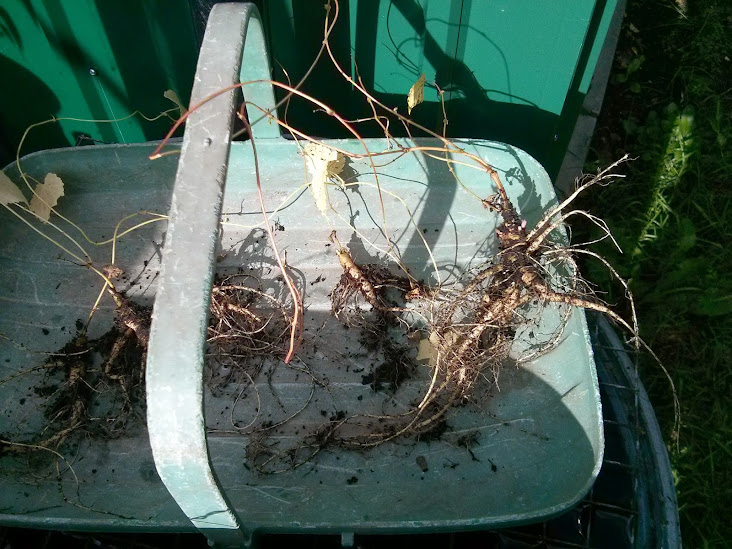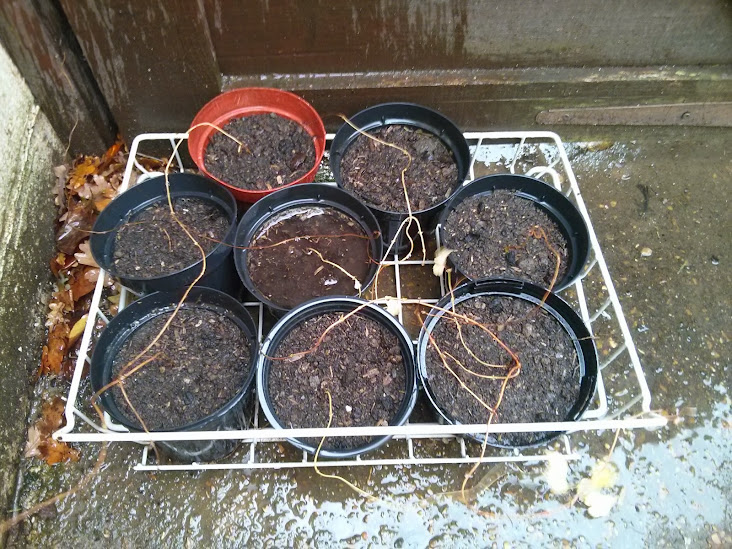I let nature take its course and thin my crop of Flyer x O.P. down to the hardiest 60 seedlings. Needless to say, I don't have space in my small urban backyard to grow 60 hops plants (in addition to the mature Challenger, Saaz, Northern Brewer, Cascade, and Missouri-native I've already got back there!)
Q: So, what to do, what to do?
A: An audacious guerrilla-gardening-wild-hops-hybridization experiment, that's what.
I'm so jealous of the wild hops you guys have over there, most of which are worthwhile for brewing, likely having descended from escaped commercial hops or maybe even desirable landraces. Where I live, there are wild hops everywhere too, but they're Humulus japonicus, the highly invasive Japanese hop, which is worthless for brewing. Totally worthless, the cones are tiny and scraggly and contain no bitter resin.
On the other hand, Humulus japonicus plants are kinda amazing, considering how flood-resistent, drought-resistent, pest-resistent, and disease-resistent they are. Wouldn't it be cool if I could breed some of those robust genetics with my desirable Flyer x O.P. hops?! With that end in mind, I spent a couple hours today planting my seedlings in amongst the wild hops at an undisclosed stream bank near my home. At the very least, I know for sure it's an area where Humulus plants can thrive. If my plants survive and eventually grow hops, it will be very easy to tell which are worth picking. If I'm lucky, I'll have a secret place to go harvest in a year or two. If I'm really, really lucky, I could replant some of those resulting hybrid seeds and see if I got the best of both worlds. Who knows? It's a long shot, but it costs nothing to try. Perhaps future generations of naturalist brewers will thank me for reinserting Humulus lupulus back into the local gene pool.
All of these pictures were taken within a few paces of each other. See how insanely abundant the Japanese hops are?!
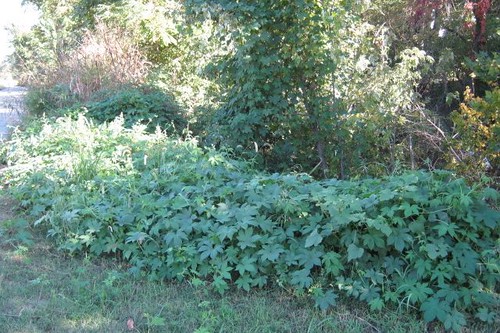




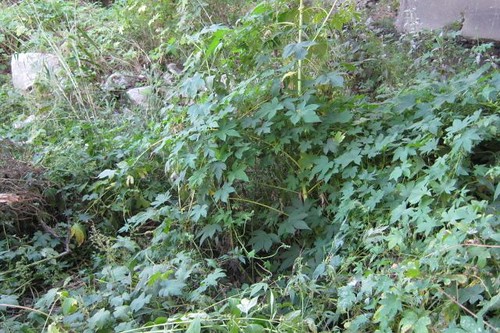
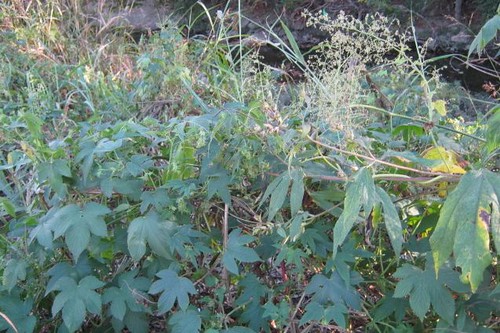
Most of the plants have green bines and green flowers...
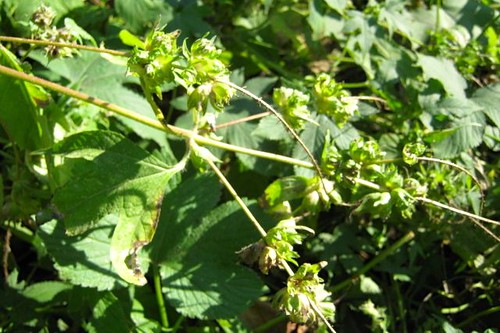
...but as you can see, some have red bines...

...and some even have purple veined flowers, which I'd never seen before in the Humulus family.


Site #1: 20 seedlings planted in this area, left of the tall Johnson grass, too rocky and uneven to mow.

Site #2: 20 seedlings planted on the left, on the downward slope to the creek, too steep to mow.

Site #3: 20 seedlings in this native landscaped rain garden, around the base of taller upright plants which they can climb.

Okay, Mother Nature, back to you. This is Seymour, over and out.


